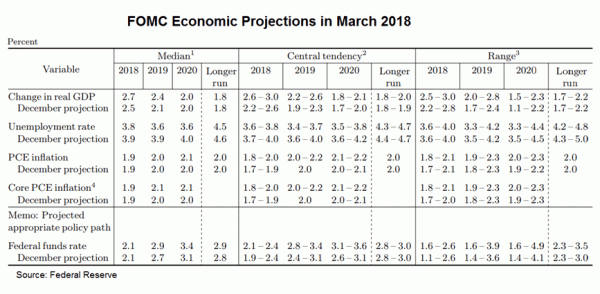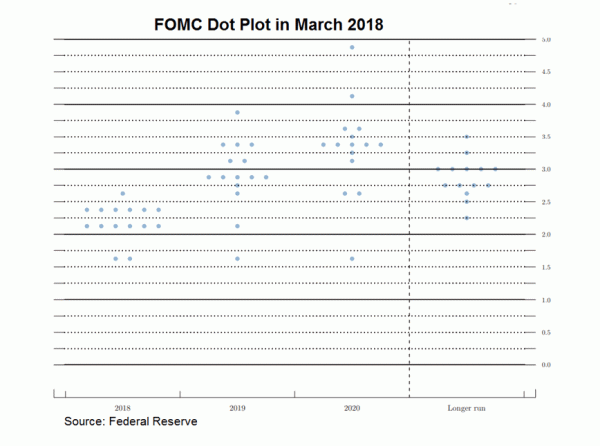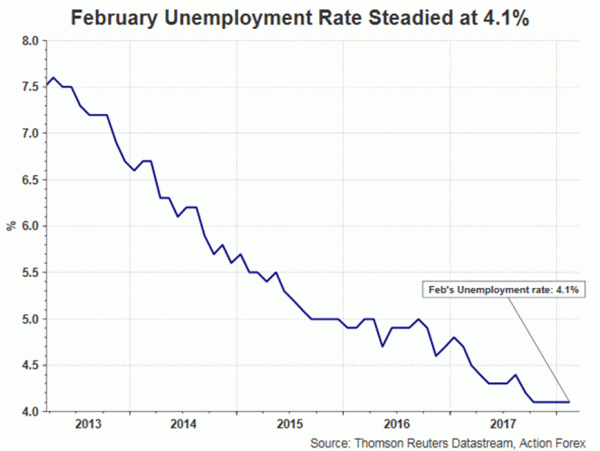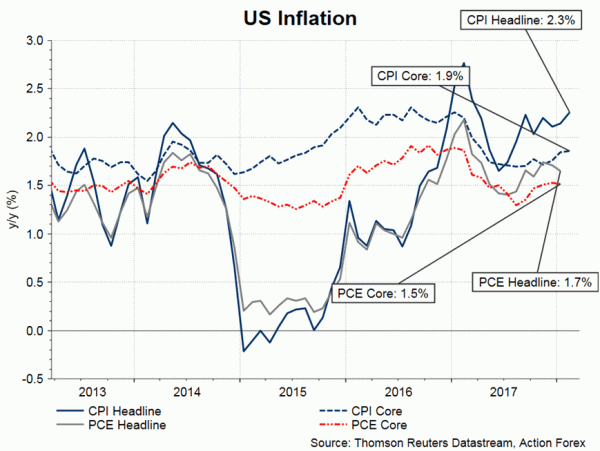FOMC’s rate hike of +25 bps is not news. What caught market attention the most was the median dot plot (which continued to project 3 rate hikes in 2018) and the upgrades in the economic projections. US dollar plunged from almost a three-week highe after the announcement. The message delivered in the accompanying statement and by Fed Chair Powell at the press conference was not as hawkish as some had expected. Powell indicated he was not concerned about an overheating economy despite higher fiscal spending. Rather, he added that trade policies have become a rising concerns among policymakers.
On the updated economic forecasts, the staff raised the GDP growth forecast to +2.7% (previous +2.5%) and +2.4% (previous: +2.1%) for 2018 and 2019 respectively, as a result of tax reform and the Federal budget plan. Policymakers acknowledged that the economy “has strengthened in recent months”. The staff revised lower the unemployment rate to 3.8% for 2018 (previous: 3.9%) and 3.6% for both 2019 and 2020 (previous: 3.9% and 4.0% respectively). The long-term unemployment rate NAIRU was also taken down by -0.1 percentage point to 4.5%These numbers are almost a full percentage point below the Fed’s latest estimate of NAIRU. On inflation, core PCE stayed unchanged for this year but was increased by a tenth each in 2019 and 2020 to 2.1%, signaling inflation might overshoot the +2% target.
While staying confident at the growth outlook, Powell at the press conference noted that “a number of participants did bring up the issue of tariffs”. While he believed that “there’s no thought that changes in trade policy should have any effect on the current outlook”, Powell added that “a number of participants reported that about their conversations with business leaders around the country and reported that trade policy has come a concern going forward for that growth”.
The median dot plot continues to point to 3 rate hikes this year (two more to come). Yet, there are now 7 members expecting more than 3 rate hikes this year, compared with 4 in December. The median member expects an average federal funds rate of 2.9% and 3.4% in 2019 and 2020, respectively, up from 2.7% and 3.1%, suggesting that 3 rate hikes (compared with 2 previously)would come in 2019 and 2 (compared with 1.5 previously) for 2020. The market has now priced in 85% chance of another rate hike in June.


















